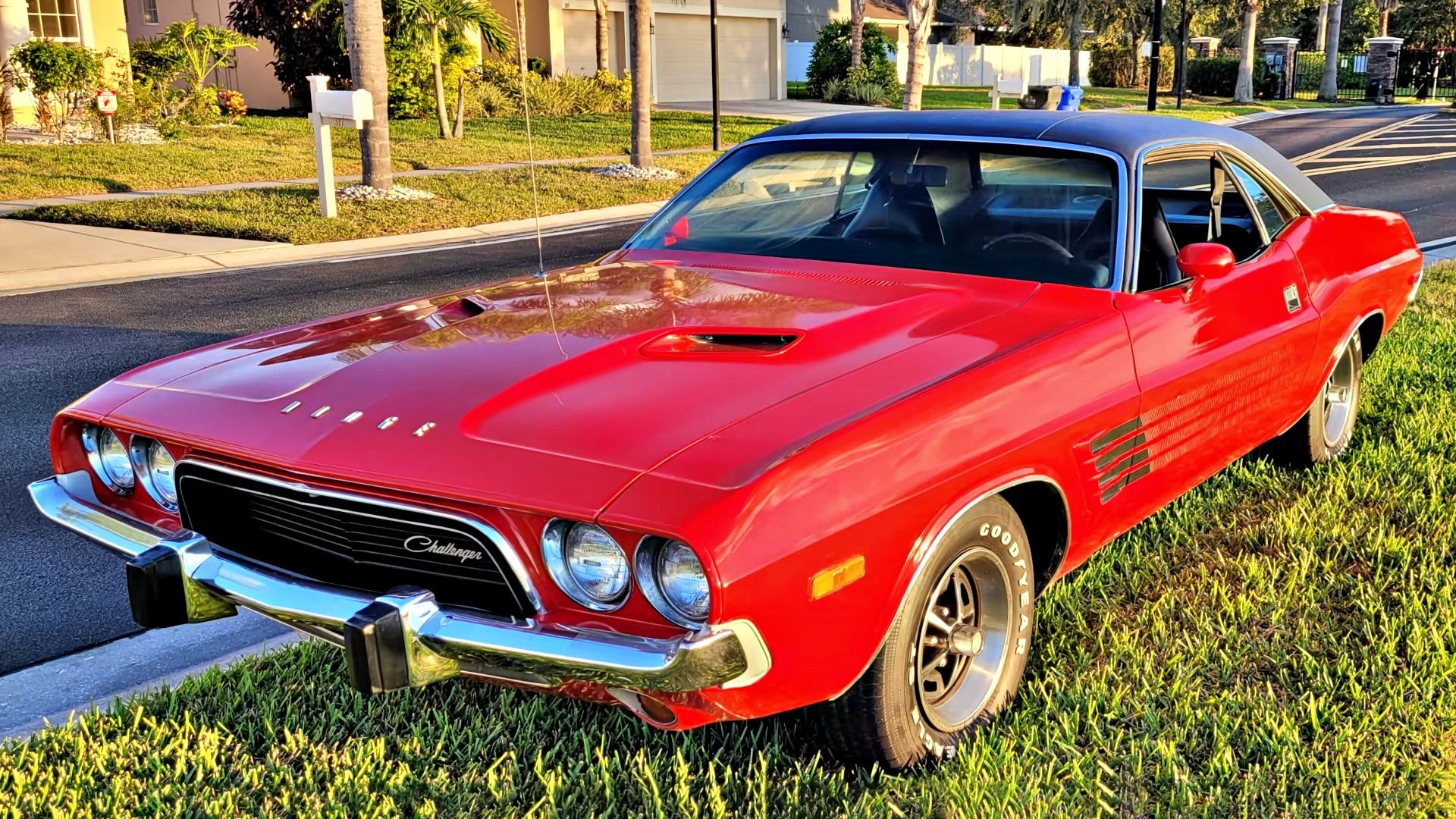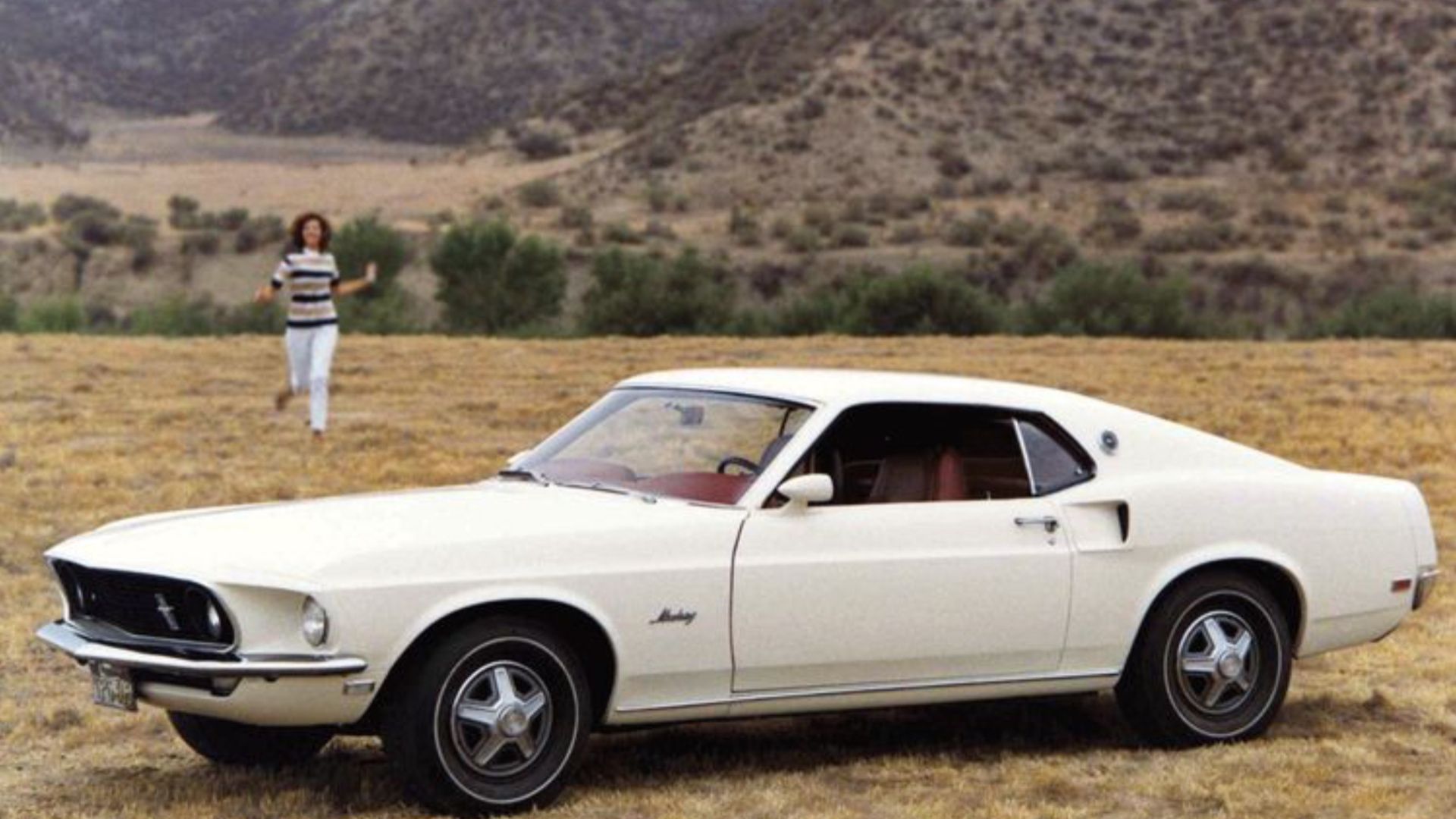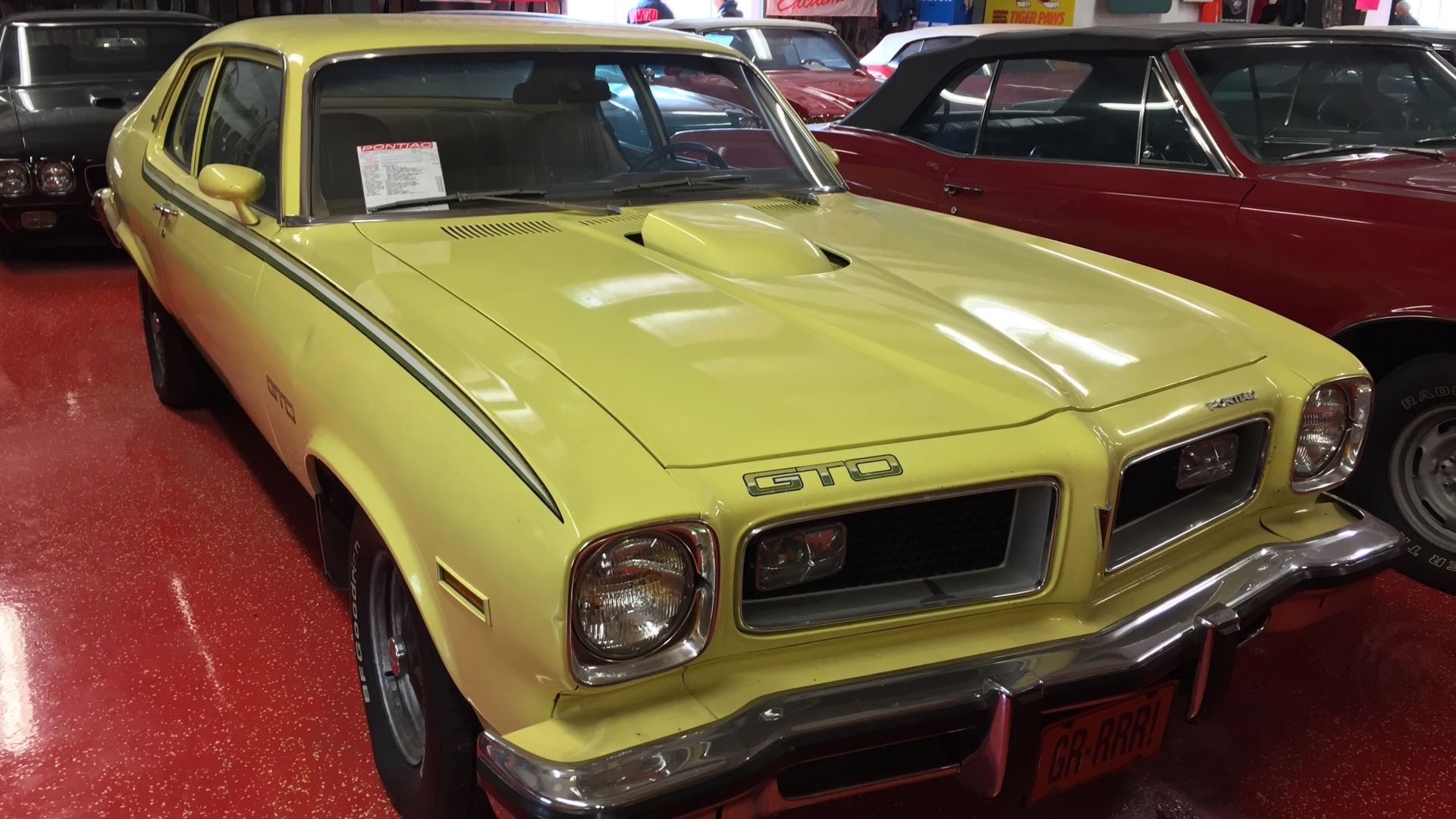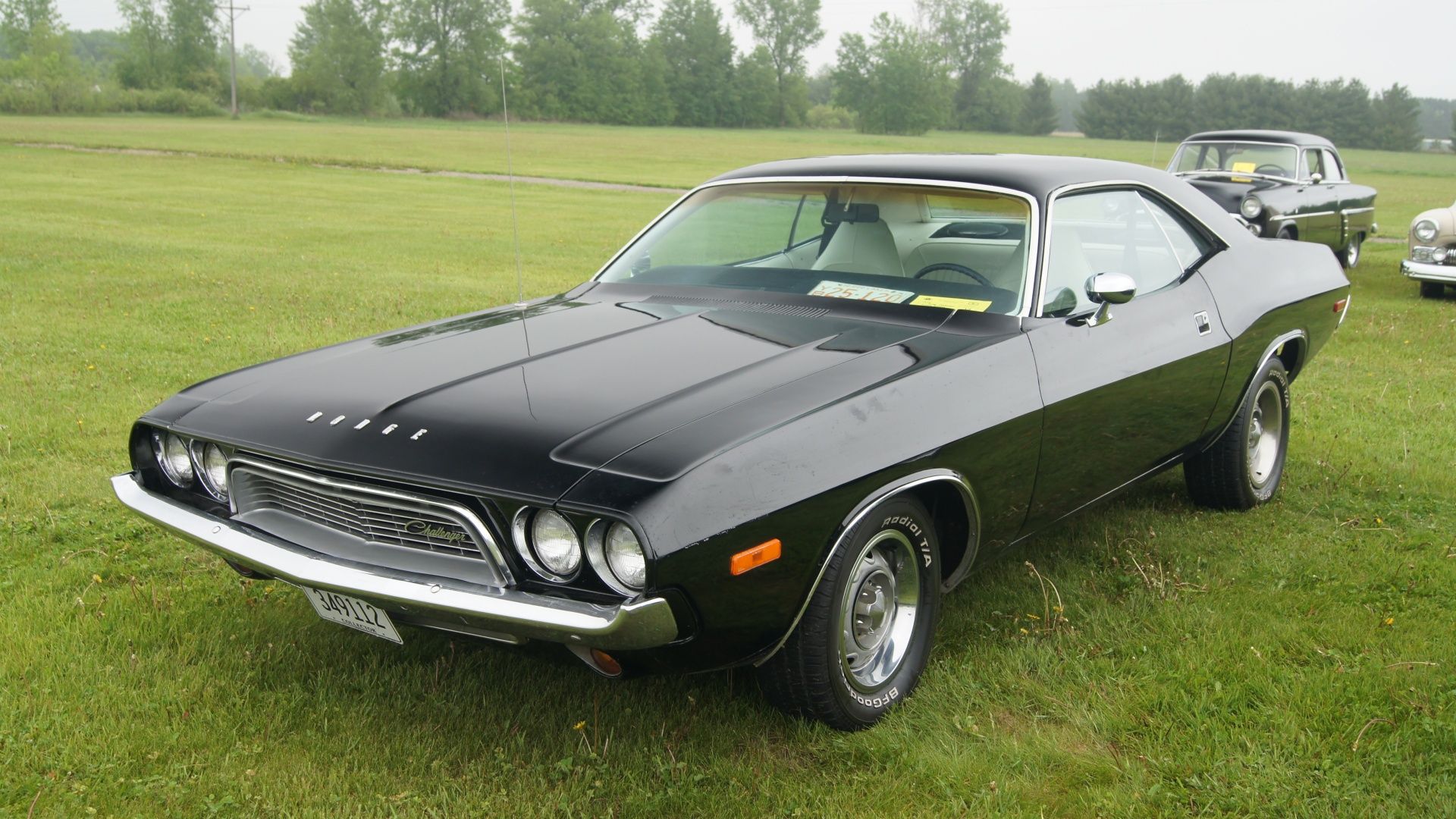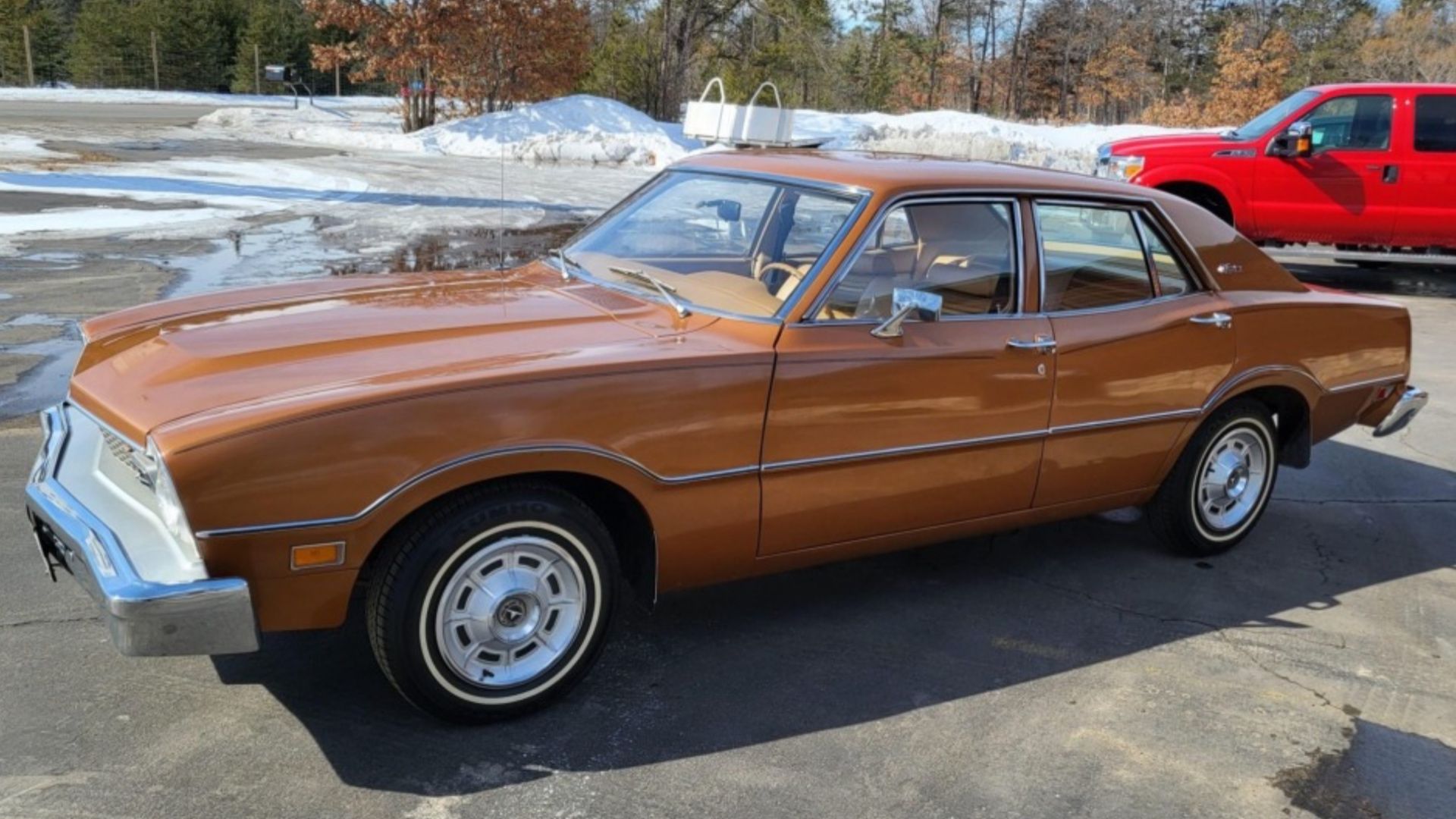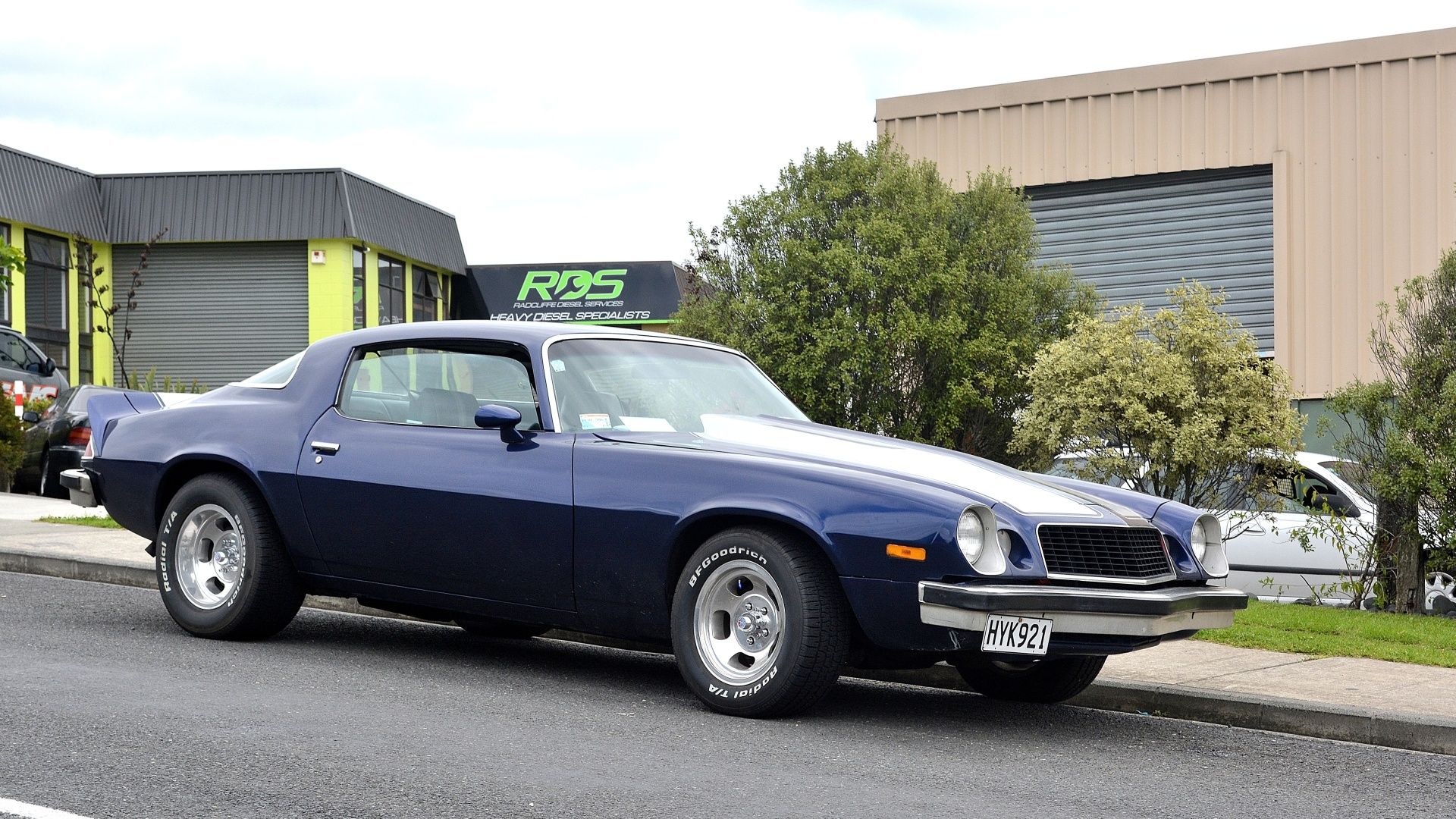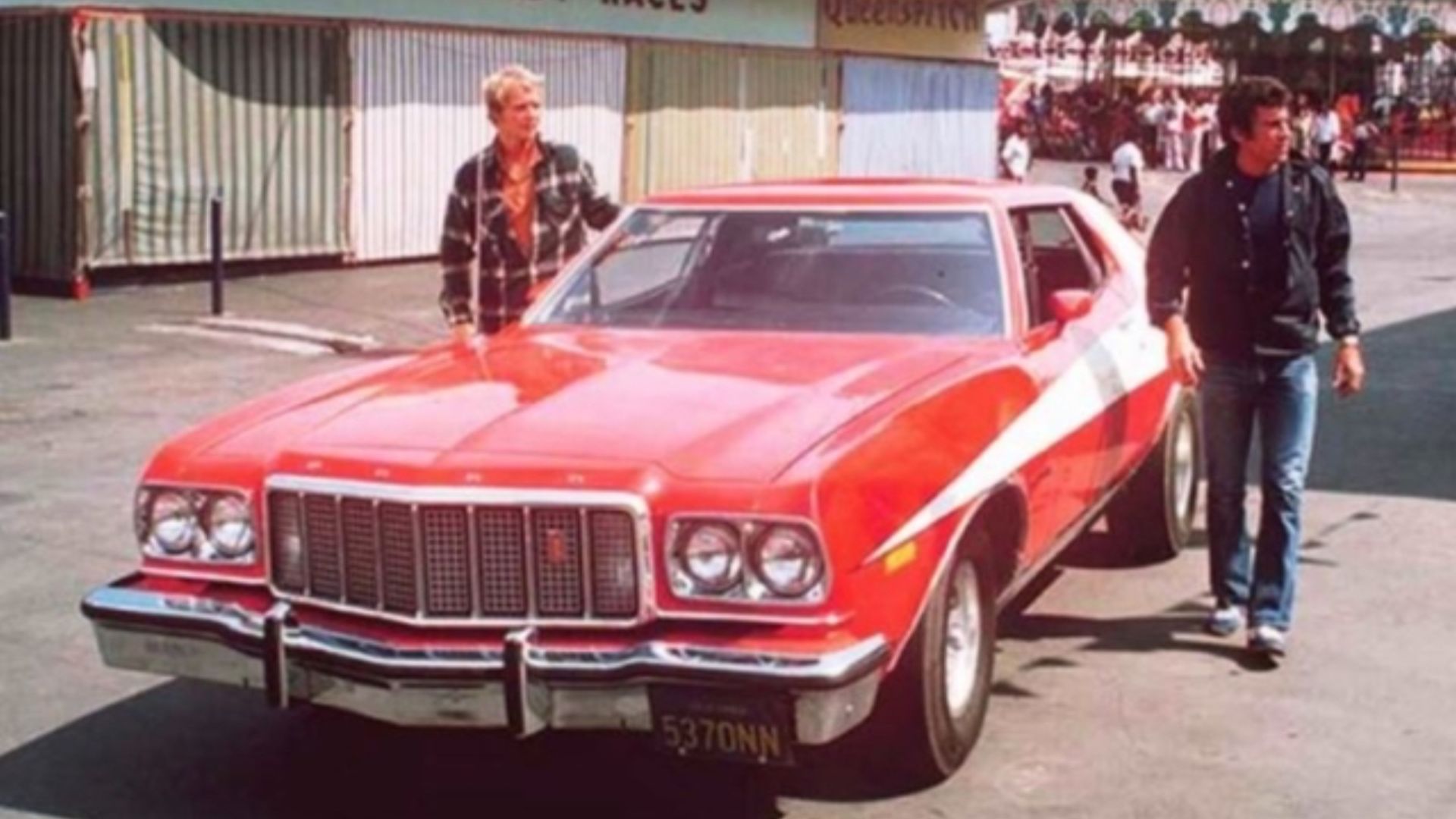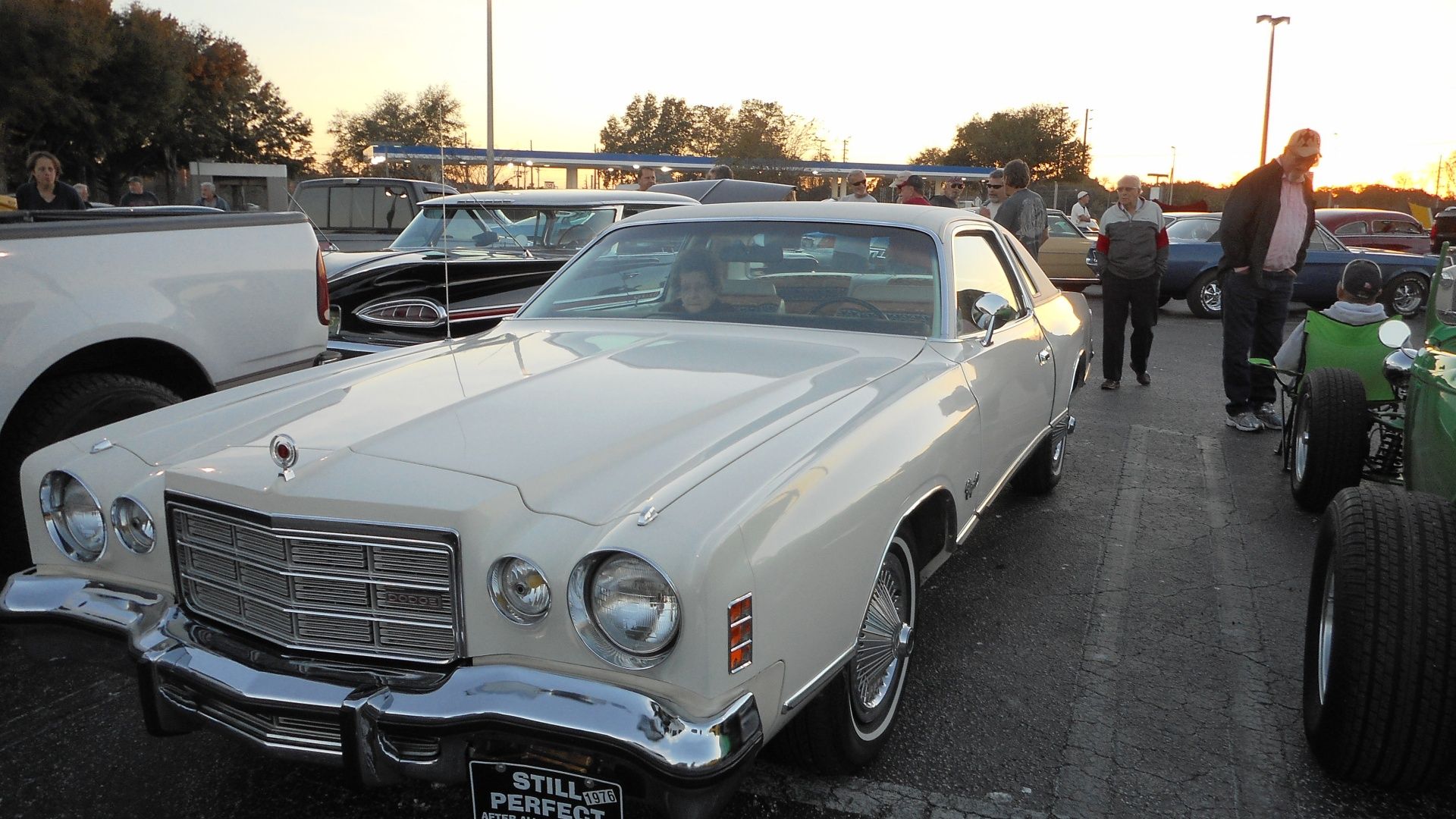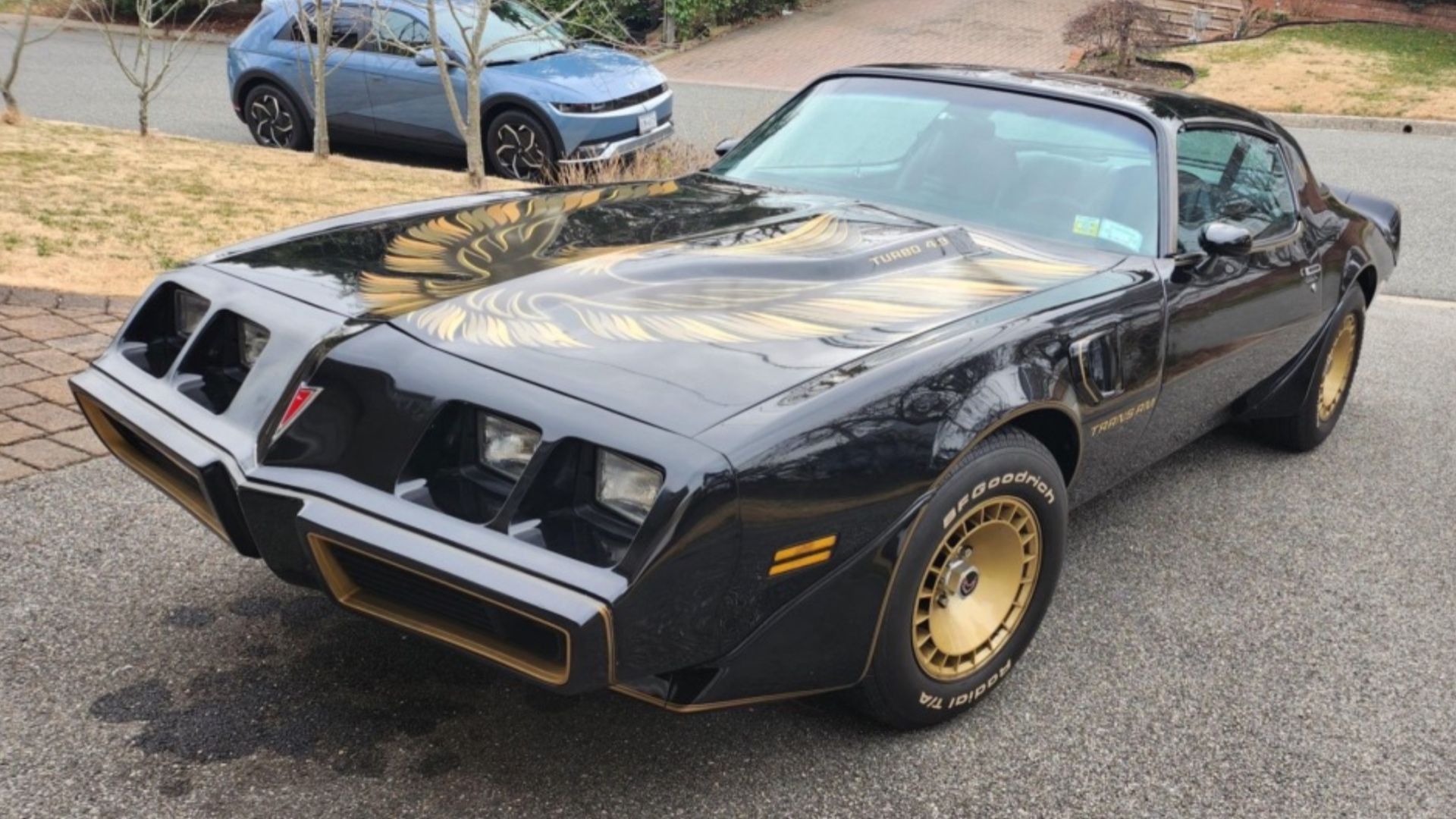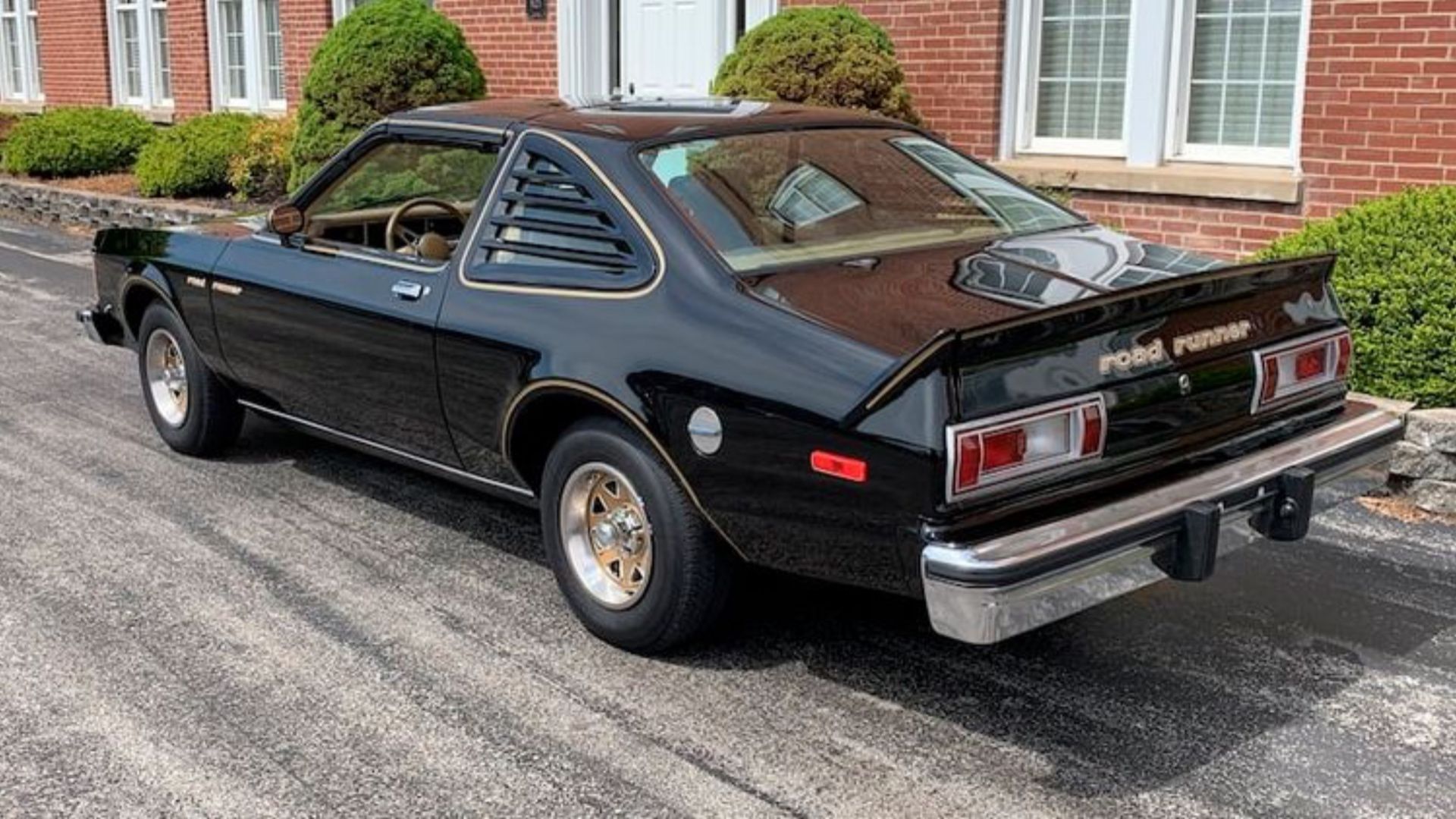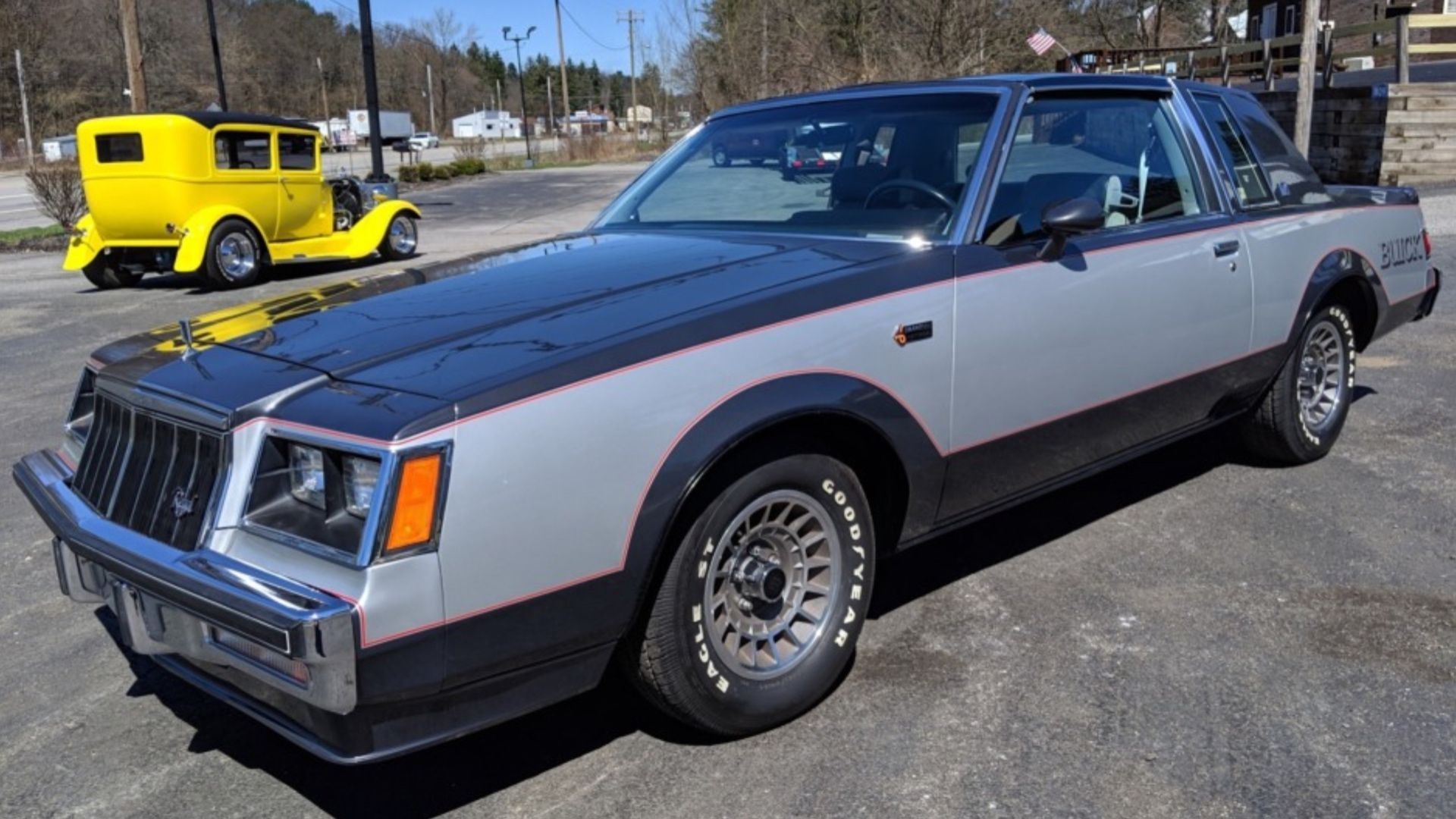The best way to define what muscle cars actually involves the process of elimination. They're not work vehicles, family wagons, status symbols, or even basic transportation. A muscle car is a mean-looking ride with a big engine, that has the specific purpose of going fast while looking as cool as possible. The Golden Age of American muscle was in the 1960s and 70s, but they continue to be made until this day.
There were also an awful lot of supposed muscle from all eras that simply fell short of the qualifications. Often in the form of a watered-down version of a once-great nameplate, these pretenders suffered from wimpy power plants and ugly design elements. For many models that claimed to be muscle cars, a simple underwhelming test drive proved they weren't.
10 1969 Ford Mustang E
Ford Mustang probably deserves a list of pretend muscle cars all their own. For every Shelby GT350, Boss 429, and Mach 1 Cobra Jet thoroughbreds there was an equal number of geldings. The 1973 Mach 1, 1978 Mustang II King Cobra, and 1980 Mustang were all castrated versions of their stallion pony car cousins.
Easily the worst Ford muscle car poseur was the 1969 Mustang E. Smack dab in the middle of the classic era, this vehicle didn't even offer a V-8 option, instead coming with a 4.1-liter inline-six. It only made 155 horsepower and took 15 excruciatingly long seconds to hit 60 mph. As if that wasn't bad enough, this underpowered insult was a 16 mpg gas-guzzler.
9 1974 Pontiac GTO
It used to be that if you wanted a fast car, you had to mod it yourself, but then in 1964, Pontiac came out with the GTO, a true American performance production car. It was celebrated in song, was the car every other automaker tried to beat, and literally kicked off the muscle car era. While the GTO's origins are impressive, its demise is kind of depressing.
In 1974, Pontiac shifted the GTO trim package to the Ventura, which was essentially a third-gen Chevy Nova. While a 402 was available for the Nova, the '74 GTO only came equipped with a 350, which made a paltry 200 horsepower. That would be the last year for the GTO, so the original muscle car went out with a sprain and a serious case of atrophy.
8 1974 Dodge Challenger
1974 was a tough year for muscle cars. Not only did the GTO get an unceremonious death, but the Dodge Challenger was also put out to pasture. Still sporting the original aggressive styling of the '70 E-body that blew everyone away, the '74 was a Challenger in name only due to a serious lack of power under the hood.
For 1974, Dodge only offered two V-8 options, a 150 horsepower 318 and a slightly better 245 horsepower 360. Either way, that was a huge letdown from the 375 horsepower and 480 pound-feet of torque of the Challenger R/T 440. It turns out there wasn't much interest in an underpowered Challenger and slumping sales forced Dodge to discontinue it.
7 1974 Ford Maverick
Barter Kings was a suspiciously scripted reality show on A&E, where two guys would try to trade garbage items up until they got something good. In the fourth episode of season 1, co-star Antonio Palazzola was attempting to trade up to get his son a muscle car. He started out with a no-name arcade game and eventually got a 1974 Ford Maverick, which he repeatedly referred to as a "muscle car."
TV and film are make-believe, but no amount of Hollywood magic can sell the fantasy that a '74 Maverick is a muscle car. The Maverick was a compact that was supposed to compete with the Chevy Nova and Dodge Dart, but they forgot to put a fast engine in it. In 1974, the unappealing Ford packed a 200 ci inline-six that made 120 horsepower. Actually, the '63 Ford 200 I6 made 120 horsepower, so the '74 version was probably less.
6 1975 Chevrolet Camaro
Camaro's second-gen kicked off in 1970 and produced some amazing muscle cars, including the 1971 SS350, which Road & Track named “One of the World’s Ten Best Cars.” Then, while still retaining the same basic appearance, in 1975, the Chevrolet Camaro became a parody of itself, with a tragically underpowered offering.
'75 is when Chevy started putting catalytic converters on all their US cars and the de-tuned 5.7-liter V-8 of the 1975 Camaro only made 145 horsepower. Compounding matters, this was also the year that Chevy dropped the Z28 package so there were no optional performance upgrades.
5 1976 Ford Gran Torino
Audiences watching the 70s action TV series, Starsky and Hutch, probably got the impression that their 1976 Ford Gran Torino was the most powerful police pursuit vehicle ever made. They always caught the bad guys, never once losing them in a car chase, so it must be fast, right?
In reality, the '76 Torino was a big clunky slug of a vehicle. It had what seemed like an impressive 7.0-liter V-8, but that barely made 220 horsepower. Still, those stripes made the car look quick as lightning, though they probably added a pound or two to the vehicle's weight, which wasn't helpful.
4 1976 Dodge Charger
1976 is when America celebrated its 200-year history of freedom. It's also when Dodge tarnished its history by turning one of the most iconic American muscle models into a second-rate luxury sedan. With a lot of the other pretender muscle cars on this list, at least they still looked kind of cool, but the fourth-generation Charger was less sporty than an Oldsmobile.
The 1974 Charger was not only insulting to its own legacy, but it was also a bulky land-boat with an undersized 185 horsepower 350 V-8. Things only got worse for the Charger with the fifth generation Omni, before things turned around in 2006 on the gen-sixers that finally put some power back under the hood. Then again, putting four doors on a Charger isn't the best way to honor it.
3 1980 Pontiac Firebird Trans Am
Thanks to Burt Reynolds in Smokey and the Bandit, everyone wanted a Screaming Chicken in the late 1970s. If they waited until 1980 to pick one up, what they actually got was more like a crying turkey. The 1980 Pontiac Firebird Trans Am still looked like the 400 ci burner that Buford T. Justice couldn't catch, but it was a ruse.
For the 1980 model year, Trans Ams came with 4.9-liter V-8s that made an anemic 135 horsepower. Pontiac did offer a turbocharger option to add a little more spunk to the engine, but that only brought it up to 200 hp. That's a far cry from the 330 horses that Firerbirds in their prime made.
2 1980 Plymouth Roadrunner Volare
The first-gen Plymouth Roadrunner was a no-frills box of awesome and subsequent generations, including the vaunted Superbird, were some of the baddest Hemi-packing B-body muscle cars ever made. At the end of its run, however, it became a sad trim package for the Plymouth Volare/Dodge Aspen platform.
The 1980 Plymouth Roadrunner Volare was the top trim level for the Volare, which is not much of a bragging point. It was fitted with a 5.9-liter V-8, which seems impressive, but it only made 170 horsepower and 280 pound-feet of torque. The public wasn't fooled by this pseudo-muscle car and after 1980 both the Roadrunner and the Volare were discontinued.
1 1982 Buick Grand National
In the early 1980s, Buick was trying to remake its image as a performance automaker and wanted to build hot cars that would appeal to young people. After what must have been a heck of a brainstorming session, they came up with the peculiar idea of stuffing a really tiny engine inside Grandpa's 1978 Regal, and thus the Grand National was born.
The 1982 Buick Grand National was named for the NASCAR Winston Cup Grand National Series, but it wasn't even a good pace car, let alone a racer. With a naturally-aspirated 3.8-liter V-6, it was as slow as it was unattractive, turning in a 14.4 second 0-60 time. Making it even more of a soapbox derby runner, Buick only offered it with a three-speed automatic transmission.

